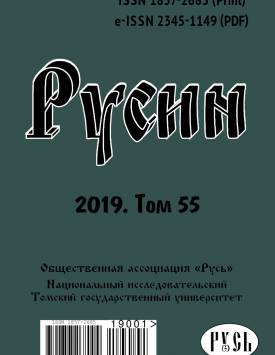Star-shaped countermark of the 1st century BC on the Bosporan obolus of the 3rd century BC as evidence of interethnic contacts between the population of Bosporus the Aspurgians
The article represents a Bosporan bronze obol of the 3rd century BC with the beardless Satyr on the obverse and the head of a bull on the reverse. The obol is unusual, since its both sides have countermarks dated by the 1st century BC. As far as bronze coins of this series fell out of circulation as a result of the financial crisis of the 3rd century BC, such long use of the coin can be explained by its long circulation on the periphery of the Bosporus state, where the limited inflow of new means of payment stipulated longer circulation of previous issues. Judging by a hanging hole, the locals might value the coin described as an amulet. Since the countermark on the coin contains the sign of the Aspurgians, the region of its circulation can be easily identified. The author assumes that this countermark was stamped around the year 12 BC by the Mithridatides, who had taken refuge in the territory of this tribe during the struggle with Polemon I. This study allows tracing the contacts between the Bosporus and barbarian population of its periphery, in this case with the Aspurgians, who obviously used the means of payment of this state starting from the 3rd century BC. The Aspurgians, like the Bosporians, revered Satyr. Thus, the data of numismatics show that there were well-developed inter-ethnic contacts between the Hellenes and the Hellenized population of Bosporus and the Aspurgians.
Keywords
история, археология, нумизматика, Боспор, аспургиане, надчеканка, history, archeology, numismatics, Bosporus, Aspurgians, countermarkAuthors
| Name | Organization | |
| Choref Mikhail M. | Nizhnevartovsk State University | choref@yandex.ru |
References

Star-shaped countermark of the 1st century BC on the Bosporan obolus of the 3rd century BC as evidence of interethnic contacts between the population of Bosporus the Aspurgians | Rusin. 2019. № 55. DOI: 10.17223/18572685/55/3
